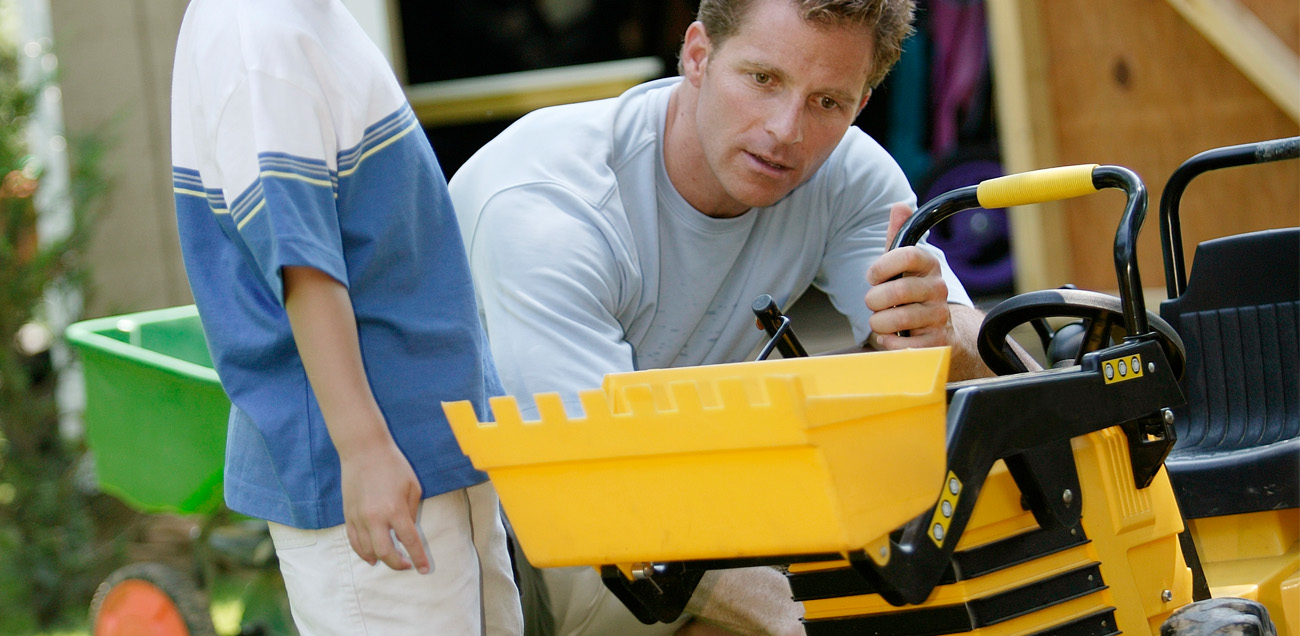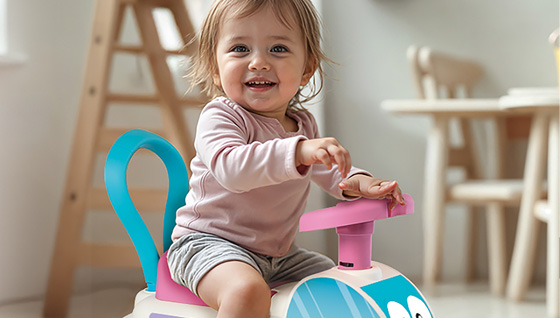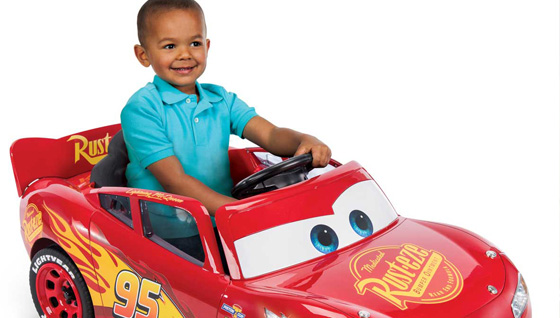How to Maintain and Store Your Child’s Ride On Toy
5 min read
Last Modified 26 June 2025 First Added 17 June 2025

Ride on toys can provide children with hours of fun and imaginative play as they explore the world around them, play with others and develop coordination skills. For these treasured toys to be a long-lasting source of fun, it’s important that ride on toys are kept in as good a condition as possible. With that in mind, understanding how to store ride on toys and maintain them is crucial. Our guide provides many helpful tips to ensure that your child’s ride on toy can stay safe, secure and in great condition.
When determining how to store ride on toys, the best approach is to find a dry, temperature-controlled space that’s clean and can keep toys safe. Given how your little rascal will often play outdoors with their ride on toy, we recommend giving it a good wipe-down after use with a damp cloth and potentially some mild soap.
If the ride on has a battery, refer to the manufacturer’s instructions, which you should be able to find in the toy’s handbook. It’s often recommended that electric ride on toys be stored with a partial charge, especially if the battery will be unused for an extended period.

We recommend that, for longevity, you don’t leave ride on toys outside. This is because leaving them outside can expose them to harsh weather conditions. For example, rain can lead to moisture buildup or rust in electrical components, which can cause permanent damage to electric ride ons. Prolonged sun exposure can cause plastic to become faded or brittle. Protecting ride on toys from cold-weather damage is crucial, as frost, snow, and strong winds can also cause permanent damage.
If you can’t find indoor storage space, there are good outdoor storage options for your child’s ride on and other outdoor toys. Medium-sized sheds and larger sheds can provide suitable protection. However, if this isn’t viable, outdoor storage boxes or outdoor storage benches offer ideal options for storing the toy. They are also a great way to keep the garden tidy. Durable storage containers like these seal well, keeping the ride on secure and protecting it from rain and excessive sun exposure. Waterproof covers could also be a cheap and easy option to keep the ride on dry if you do choose to store it outside.

When learning how to store your kids’ ride on toys, it’s important to consider the different seasons. In winter, freezing temperatures, snow and strong winds can make plastic brittle and damage batteries. It’s vital to store ride on toys so they aren’t impacted by cold weather conditions during the winter months.
In spring, increased humidity and thawing can lead to potential condensation inside toy parts, so check toys for any signs of mould, rust or mildew before use. In summer, intense sunlight can lead to the toy’s colour fading, as well as plastic and rubber damage. High heat can also potentially damage the batteries of electric ride ons so ensure they stay away from direct sunlight. In autumn, falling leaves can get trapped in wheels, so ensure ride ons are regularly checked for any potential damage from debris.
Once you get into a regular routine, maintaining the condition of a ride on toy is simple. Regularly wipe down the toy with a damp cloth and mild soap. Make sure you use a clean cloth to dry it thoroughly afterwards. Check any moving parts (wheels and pedals) and steering for debris to ensure every part is moving freely as intended. You should also check that screws and bolts are tightly secured to the ride on.
The instruction manual should contain charging guidelines for electric ride ons. Avoid leaving the battery unused for long periods without at least a partial charge. You should also check any connections to the battery for corrosion.
Performing safety checks is vital before your child uses ride on toys to ensure safety. You should look for cracks, loose parts or sharp edges. It’s particularly important to do this after an extended period in storage or if your child has been particularly rough with the toy during playtime!
Other safety checks you should perform include:
You should also consider a range of safety equipment, like helmets, knee pads and elbow pads, for faster ride ons and balance bikes.

Proper storage and maintenance can extend a ride on toy’s life. However, they aren’t forever. Replacement might be needed if irreparable damage is caused (such as a cracked frame during winter storage, for example). Wear and tear may have also led to the ride on toy becoming unsafe.
Electrical components from an electric ride on may have become faulty meaning they are unable to be fixed by simple repair. Your child may also simply have outgrown the toy in size or developmental stage. In all these instances, replacing the ride on toy is usually the safest and recommended option.
We hope that you’ve found this guide about how to store ride on toys useful. Storing ride on toys is crucial to maintaining their quality, but as discussed, there are other aspects to consider and small steps you can take to make a ride on last much longer.
Read our disclaimers.
Read our disclaimers.